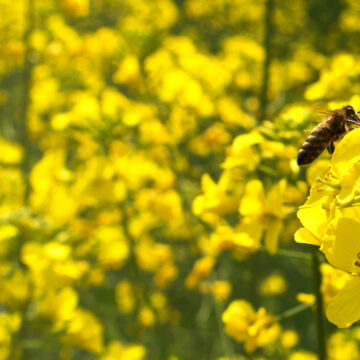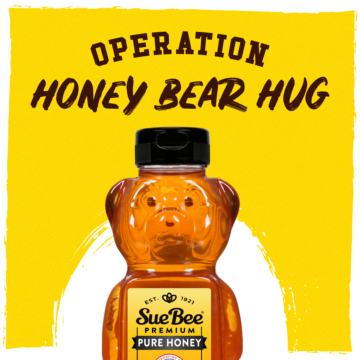Priceless Pollination
Measuring the value of the treasured honeybee
Honey. Glorious, golden honey. So natural, so versatile, so delicious. And it’s one very good reason we all need to ensure that the honeybee remains sustainable for … well, forever.
In recent weeks, we’ve outlined a variety of motivations for preserving the future of the honeybee in our blog series on sustainability: “Wait! Don’t Throw Away That Honey Bottle,” “The Honeybee Stewards” and “Sustaining Sustainability.”
And while honey is important, there is an even more vital reason we must secure the sustainability of the honeybee: pollination.
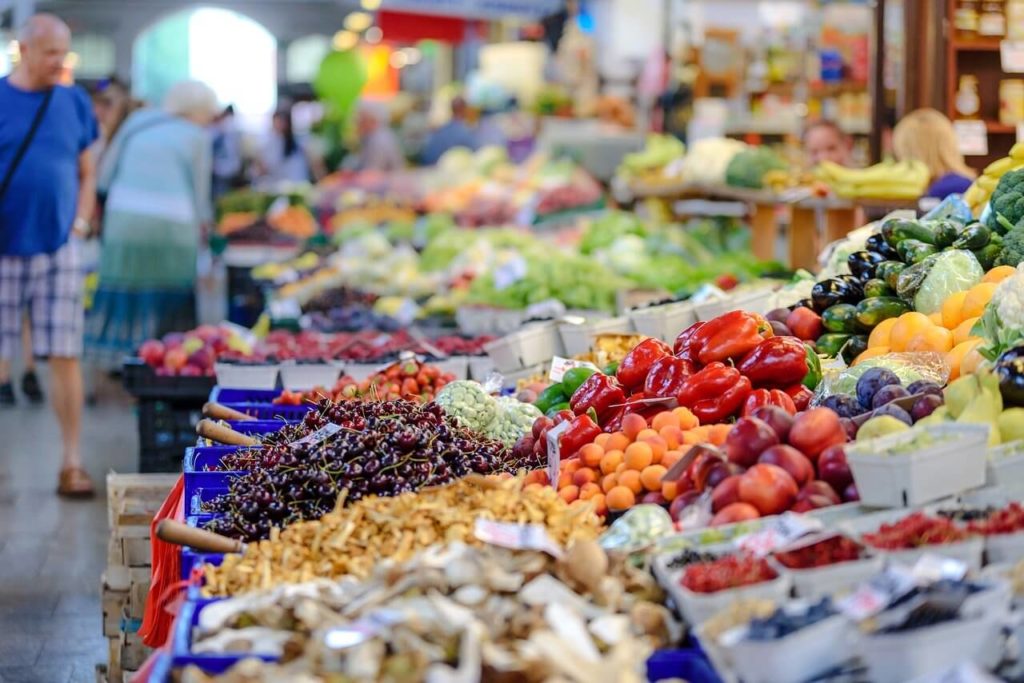
Sustaining our food supply
You might have heard an often-used phrase: Honeybees are responsible for pollinating one in every three bites of food. It’s hard to measure the accuracy of that but, in theory, it’s factual. Consider: We rely on honeybees and other pollinators to pollinate 71 of the 100 crops that provide 90% of the world’s food.
Let that sink in for a moment.
While other insects, like butterflies, provide pollination services, it’s the honeybee who pollinates the most foods we consume – more than 130 different fruits and vegetables. In the U.S. alone, honeybees pollinate an estimated $15 billion worth of crops every year.
Among the foods honeybees pollinate: apples, pumpkins, blueberries, cucumbers, onions, avocados, cherries, broccoli, cranberries, grapes, lettuce, strawberries, watermelon, and on and on.
Love coffee? Thank the honeybees; they pollinate the coffee cherry, which is a fruit, and the coffee bean itself is a part of the fruit.
Many of those crops would disappear if not for the honeybee. And while some may be able to survive without their pollination services, farmers will tell you their yields are higher, and the fruits and vegetables are larger and healthier when they have been pollinated by honeybees.
You might have noticed a very popular nut we haven’t mentioned yet – one that is entirely dependent upon the honeybee: almonds. This one is so significant that we devoted an entire section to it.
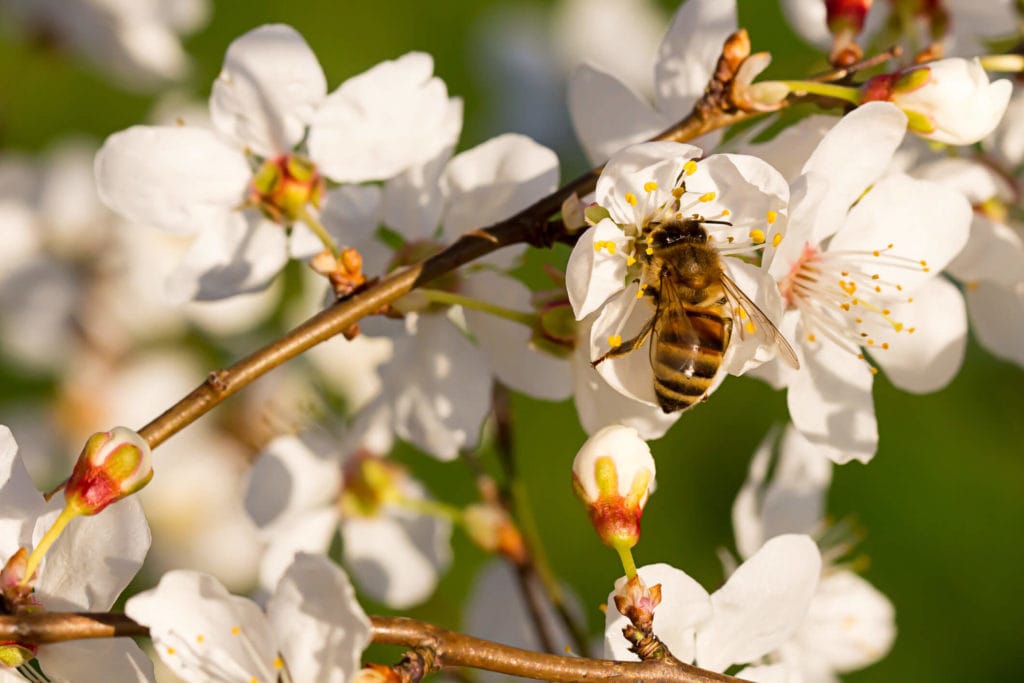
Honeybees and almonds
We’ve been throwing out a lot of numbers, and we have a few more because they are essential to stressing the impact the American honeybee has on the U.S. production of almonds.
First, how many almonds are we talking about? The USDA reports that California has 1.6 million acres of almond trees (and growing each year), which produces 3.1 billion pounds of almonds, with a value of $7.6 billion.
The vast majority of almonds are grown in California, which is responsible for 80% of the world’s almond production. California sends its almonds to more than 90 countries worldwide.
All of those numbers would be “0” if not for the pollination services of honeybees. And, as you might have gathered, a lot of honeybees are needed to pollinate California’s 1.6 million acres.
Two hives of honeybees per acre of almonds is recommended, which means 3.2 million hives are needed to pollinate all those almonds. California beekeepers provide about 500,000 of those hives, with the rest coming from beekeepers across the country.
Beekeepers, including the majority of the Sioux Honey Co-op’s beekeepers, take their honeybees to California a few months after their final harvest of honey in August and early September. The almond pollination season is in early February and continues into March.
How about another number? If 3.2 million hives are needed to pollinate all of California’s almonds, and if every hive averages about 25,000 honeybees, that’s about 80 billion honeybees!
Not all of those honeybees are from commercial beekeepers. According to the USDA, for beekeeper operations with five or more colonies, the number of beehives totaled about 2.92 million in 2021.
Furthermore, it should be noted that not every single acre of almond trees gets two hives, but that is the number that is recommended for each acre.
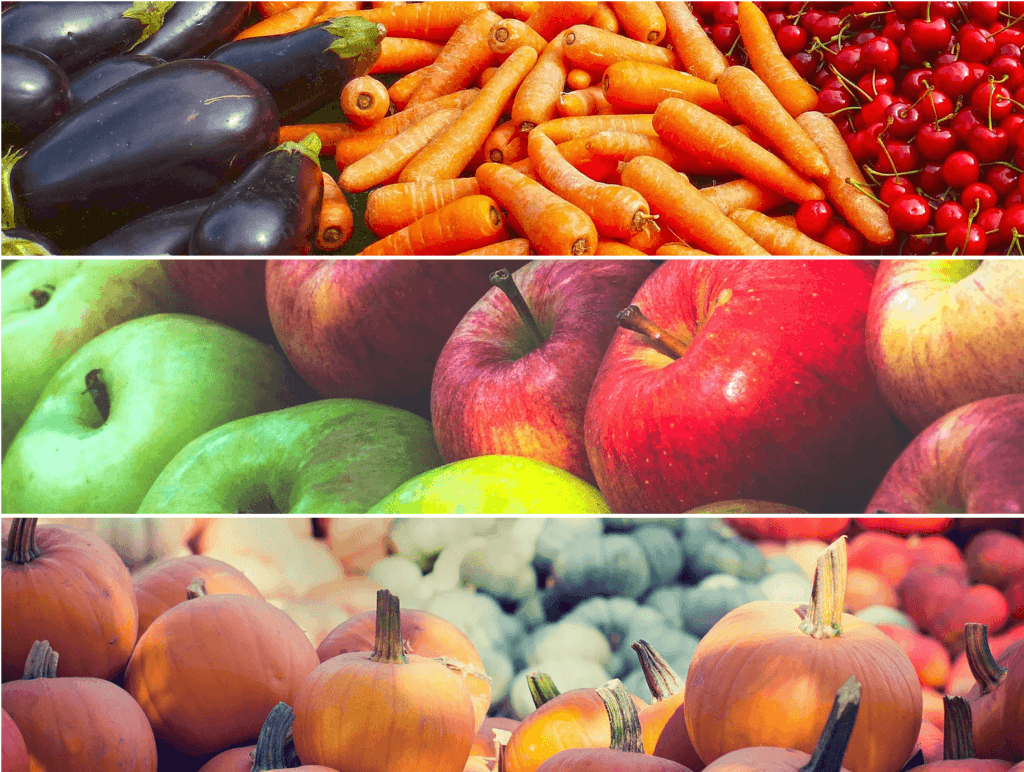
Help from the USDA
Like all of us at Sioux Honey, the USDA supports the critical role pollinators play in agriculture. To that end, the USDA provides research and data collections, diagnostic services and pollinator health monitoring, pollinator habitat enhancement programs, and pollinator health grants.
Currently, the USDA is seeking nominations from now until May 31, 2022, for its newly formed National Pollinator Subcommittee. The subcommittee will be part of the National Agricultural Research, Extension, Education, and Economics (NAREEE) Advisory Board, which provides feedback to the Secretary of Agriculture, USDA’s science agencies and university collaborators on food and agricultural research, education, extension and economics priorities and policies.
“USDA takes very seriously our duty to protect pollinators so that they can continue to play a critical role in our food production system,” Agriculture Secretary Tom Vilsack said in a recent press release.
The NAREEE Advisory Board’s Pollinator Subcommittee will provide input on annual USDA strategic pollinator priorities and goals and will make pollinator health-related recommendations to strengthen USDA pollinator research efforts. USDA is both a major funder and conductor of pollinator research, with research initiatives spanning across five USDA mission areas: Status and Trends (e.g., pollinator inventory and monitoring, economics and social sciences); Pests and Pathogens (both established and emerging); Environmental Stressors (e.g., weather stress, pesticide exposure, migratory and stocking density stress); Forage, Habitat and Nutrition; and Genetics and Breeding.
USDA expects to appoint seven new Pollinator Subcommittee members in accordance with the federal statute. Candidates selected to the Pollinator Subcommittee may serve one to three years, with terms anticipated to start in July 2022.
For information on how to apply, visit the NAREEE website.

